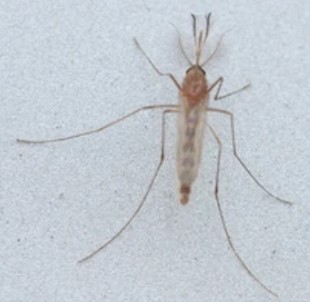Gene Editing in Anopheles Sinensis

Anopheles sinensis is a species of mosquito that transmits malaria as well as lymphatic filariasis. It is regarded as the most important vector of these human parasitic diseases in Southeast Asia. It is the primary vector of vivax malaria (Plasmodium vivax) in many regions. In China it also transmits the filalarial parasite (Wuchereria bancrofti), and arthropod roundworm (Romanomermis jingdeensis). In Japan it is also a vector of a roundworm Setaria digitata in sheep and goats. Because of its similarity with other Anopheles, it is now considered a species complex comprising at least four species. Its genome was sequenced in 2014.
Our Services for Gene Editing in Anopheles Sinensis
Anopheles sinensis is an important vector for malaria transmission and poses a great risk to human safety, therefore, it is imperative to continuously search for new ways to control such transmission routes. Lifeasible provides gene editing services for anopheles sinensis with zinc-finger nucleases (ZFNs), transcription activator-like effector nucleases (TALEN) and CRISPR/Cas9 to control them.
| Editable genes |
Relevant traits exhibited after editing |
| ace-1 |
- We can edit the ace-1 gene to affect the development of resistance in anopheles sinensis.
|
| AsinOBP62 |
- We can edit the AsinOBP62 to affect host-seeking by female anopheles sinensis mosquitoes.
|
| LY-trypsin |
- We can edit the LY-trypsin gene to affect the development of anopheles sinensis.
|
| AsinOBP2 |
- We can edit AsinOBP2 to affect host selection by anopheles sinensis.
|
| AsCYP6Z2 |
- We can edit the AsCYP6Z2 gene to affect deltamethrin, and provide further exploration of this gene in the development of pyrethroid insecticides.
|
| AsBe3 |
- We can edit AsBe3 to affect the biosynthesis and metabolism of anopheles sinensis carboxylesterase.
|
| AsABCG28 |
- We can edit the AsABCG28 gene to affect deltamethrin resistance, mainly by transporting deltamethrin metabolite 3-phenoxybenzoic acid and reducing its accumulation in the body, thus enhancing mosquito resistance to deltamethrin.
|
AsGR58
AsGR46
AsGR3 |
- We can edit some genes such as AsGR58, AsGR46 and AsGR3 to affect the perception of airflow movement in anopheles sinensis.
|
AsOBP1
AsOBP4 |
- We can edit AsOBP1 and AsOBP4 to affect anopheles sinensis' search for egg-laying sites.
|
CYP6P5
CYPH14
CYP12F16 |
- We can edit CYP6P5, CYPH14 and CYP12F16 to affect anopheles sinensis resistance to deltamethrin.
|
| Asae7 |
- We can edit the Asae7 to affect the biosynthetic process of detoxification enzymes in insects, which in turn affects the resistance of anopheles sinensis.
|
| AsHO-1 |
- We can edit the AsHO-1 to interfere the dynamic regulation of heme and other physiological processes in larval and adult mosquitoes.
|
Advantages
- Editing of resistance-related genes, affects the biosynthetic process of detoxifying substances in anopheles sinensis and influences its resistance, such as resistance to deltamethrin.
- Edit odor perception-related genes to interfere the host-seeking process of anopheles sinensis.
- Edit some sensory-related genes that interfere the perception of airflow by anopheles sinensis.
- Edit development-related genes of anopheles sinensis that affect its growth and development process.
Lifeasible offers three means include ZFNs, TALEN and CRISPR/Cas9 for anopheles sinensis to the service of gene editing through interfering the development and reproduction of anopheles sinensis to control this organism. If you are interested in our services or if you have any questions, please click online inquiry for more detailed information.
Reference
- Metcalf, R.L.; et al. Olfactory receptors in the melon fly Dacus cucurbitae and the oriental fruit fly Dacus dorsalis. Proc Natl Acad Sci U S A, 1983, 80(11): 3143-7.
For research or industrial raw materials, not for personal medical use!
